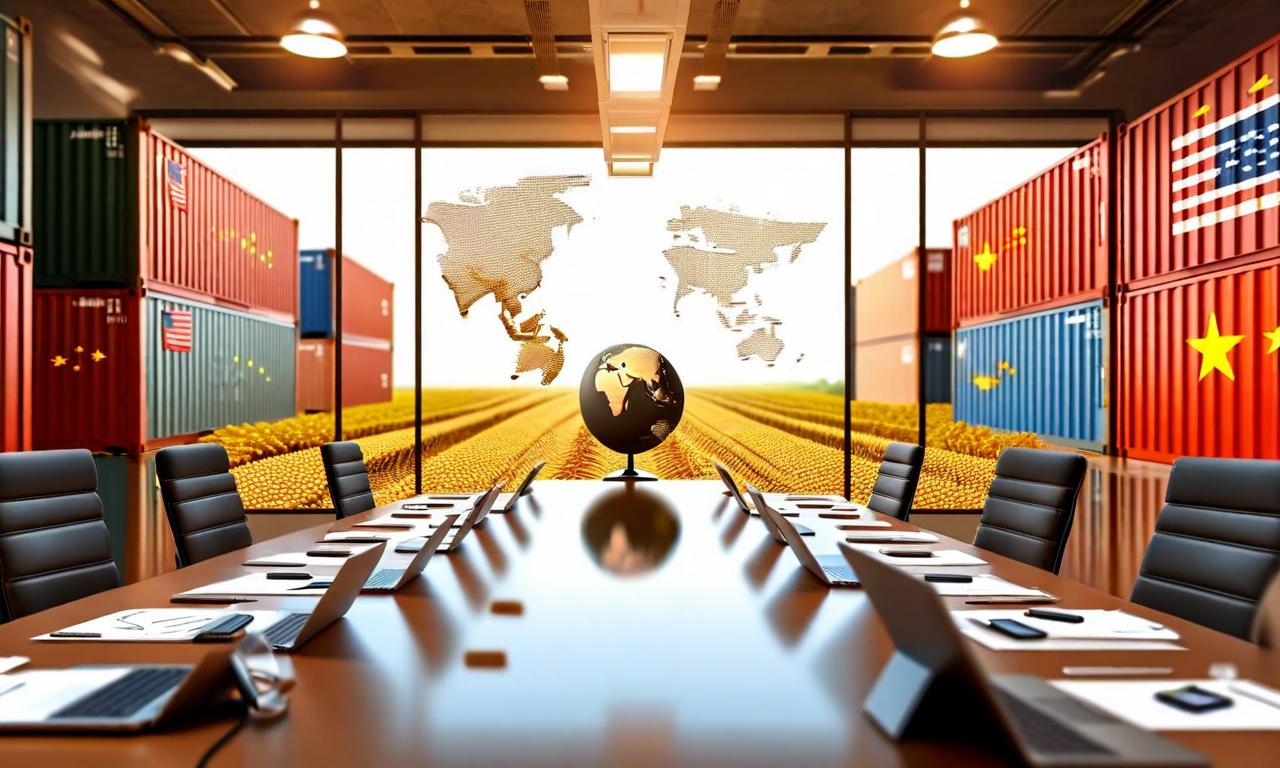US-China Trade Talks Set for Malaysia Amid Rare Earth Export Tensions
US and Chinese delegations are set for crucial trade talks in Malaysia from October 24-27, 2023. The meeting, led by Chinese Vice Premier He Lifeng and including US Treasury Secretary Scott Bessent and Trade Representative Jamieson Greer, comes amid tensions over China's rare earth export restrictions and impending US tariffs. Key discussion points include resuming US soybean purchases, China's stance on the Russia-Ukraine conflict, and addressing rare earth export restrictions. The talks precede a planned meeting between Presidents Trump and Xi in South Korea and could significantly impact global trade, particularly in technology and agriculture sectors.

*this image is generated using AI for illustrative purposes only.
US and Chinese delegations are gearing up for crucial trade talks in Malaysia from October 24-27, against a backdrop of escalating tensions over China's tightened rare earth export restrictions. The high-stakes meeting comes just a week before the US is set to implement additional 100% tariffs on Chinese goods, scheduled to take effect on November 1.
Key Meeting Details
| Aspect | Details |
|---|---|
| Date | October 24-27, 2023 |
| Location | Malaysia |
| Chinese Delegation Lead | Vice Premier He Lifeng |
| US Delegation Key Members | Treasury Secretary Scott Bessent, Trade Representative Jamieson Greer |
Context of the Talks
The talks are taking place in response to China's new regulations requiring government approval for rare earth shipments, a move that has further strained the already tense trade relationship between the two economic giants. Rare earth elements are crucial components in various high-tech and defense applications, making them a strategic resource in the global economy.
Objectives and Expectations
Both sides aim to build on the consensus reached during a September phone call between US President Donald Trump and Chinese President Xi Jinping. The meeting in Malaysia is seen as a precursor to a planned encounter between the two leaders in South Korea.
Key points of discussion are expected to include:
- Resumption of US soybean purchases by China
- China's stance on the Russia-Ukraine conflict
- Addressing the rare earth export restrictions
Potential Outcomes
President Trump has indicated he will push for China to resume soybean purchases from US farmers, a move that could potentially ease tensions in the agricultural sector. Additionally, Trump suggested that President Xi's position on the Russia-Ukraine war has shifted towards wanting the conflict to end, potentially opening avenues for diplomatic cooperation.
The outcome of these talks could have significant implications for global trade, particularly in the technology and agricultural sectors. As the November 1 deadline for new tariffs approaches, the international business community will be closely watching for any signs of progress or further escalation in the US-China trade relationship.
Conclusion
As the world's two largest economies engage in these critical discussions, the global market remains attentive. The results of the Malaysia talks could potentially shape the trajectory of international trade and geopolitical relations in the coming months. Investors and businesses worldwide will be keenly awaiting any announcements or policy shifts that may emerge from this high-level meeting.





























